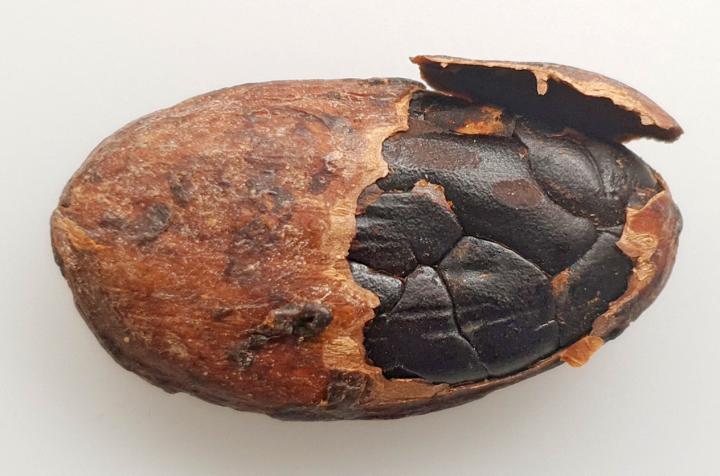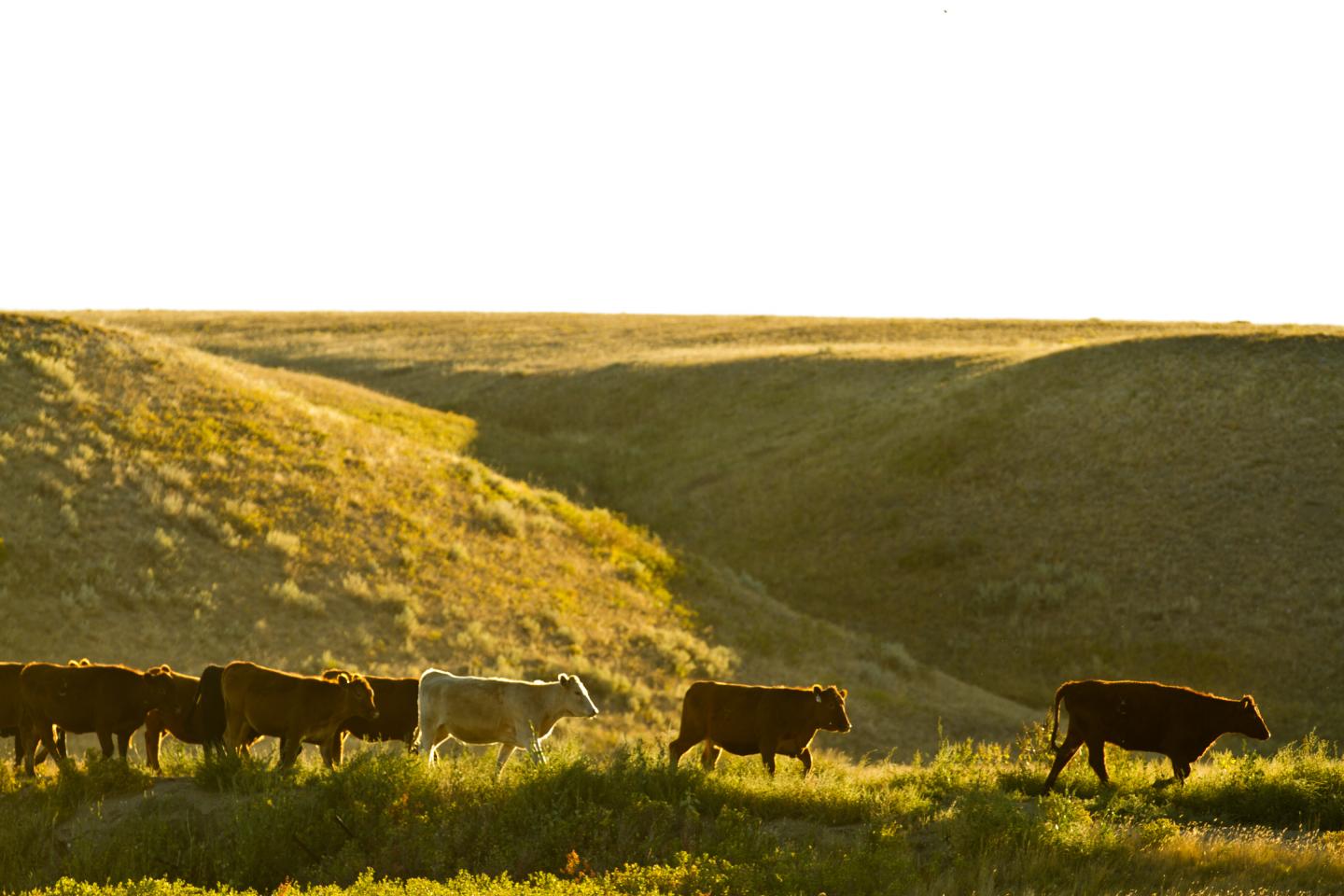Explore and contribute to the IFSS portal and connect to the global community working to ensure sustainable and resilient food systems that provide affordable, safe and nutritious diets for the growing global population on a healthy planet.
Tag: FOOD/FOOD SCIENCE
New research will unveil the future for natural preservation of food products
With a grant of DKK 10 million from the Novo Nordisk Foundation, researchers from Aarhus University are aiming to find out how best to use naturally occurring compounds to preserve food.
Preventing the spread of plant pandemics
New tools needed to curb threats to global food security
Global food, hunger challenges projected to increase mortality, disability by 2050
New study shows climate change will increase the challenge of meeting nutrition and food needs of a growing population, especially in Africa south of the Sahara, but policy actions initiated now could help avert this additional burden
Terasaki Institute for Biomedical Innovation is awarded grant from the Good Food Institute
Terasaki Institute creates an innovative method to produce cultivated meat
Vegan and omnivorous diets promote equivalent muscle mass gain, study shows
Trials performed by researchers at the University of São Paulo with healthy young adults show that the right level of protein intake is the key to muscle health, regardless of protein source.
Long search finds grain of hope in the glume
Researchers have found the elusive genetic element controlling the elongated grains and glumes of a wheat variety identified by the renowned botanist Carl Linnaeus more than 250 years ago. The findings relating to Polish wheat, Triticum polonicum, could translate into…
Pets and their owners diet together, new study finds
International study examines why pet owners choose grain-free food
Meeting preview: Hot topics at NUTRITION 2021 LIVE ONLINE
Get the latest on COVID-19, precision nutrition and more with a complimentary press pass
Turn problems into opportunities: Photorespiration for improved plant metabolism
Researchers from the EU-funded Gain4Crops project have now succeeded in engineering a solution that connects photorespiration and C4 metabolism, two of the main targets in plant metabolism.
Discovery increases likelihood of growing food despite drought
Genes to keep plants green
Symbiotic Bacteria In Root Cells May Be Key To Producing Better Crops, Rutgers Study Finds
A Rutgers study finds that symbiotic bacteria that colonize root cells may be managed to produce hardier crops that need less fertilizer.
Soybean cyst nematode is the most damaging soybean pathogen–and it’s rapidly spreading
The soybean cyst nematode (SCN) is the most damaging pathogen of soybean in the United States and Canada and it is spreading rapidly, according to information compiled by Gregory Tylka and Christopher Marett, nematologists at Iowa State University. SCN was…
Mutant corn gene boosts sugar in seeds, leaves, may lead to breeding better crop
An abnormal build up of carbohydrates — sugars and starches — in the kernels and leaves of a mutant line of corn can be traced to one misregulated gene, and that discovery offers clues about how the plant deals with…
Piecing together the LanCL puzzle
Researchers from the Carl R. Woese Institute for Genomic Biology in collaboration with scientists at Oxford University have published a paper in Cell reporting the function of LanCL proteins. These proteins are found in eukaryotic cells but their function was…
Two compounds can make chocolate smell musty and moldy
Chocolate is a beloved treat, but sometimes the cocoa beans that go into bars and other sweets have unpleasant flavors or scents, making the final products taste bad. Surprisingly, only a few compounds associated with these stinky odors are known.…
Compound found in some vegetables may reduce diabetes-related kidney damage
Phenethyl isothiocyanate, derived from watercress and other cruciferous vegetables, shows benefits in rats
Canola growth environments and genetics shape their seed microbiomes
Just as humans receive the first members of their microbiomes from their mothers, seeds may harbor some of the first microorganisms plants encounter. While these initial microbes could become influential players in the plants’ microbiomes, the microbial communities that colonize…
Study reports novel role of enzyme in plant immunity and defense gene expression
A recently published article in the Molecular Plant-Microbe Interactions journal provides new evidence that pathogens are hijacking the plant immune system to cause disease while providing insights into a newly discovered mechanism. A large variety of pathogens infect plants and…
Cracking open the mystery of how many bubbles are in a glass of beer
After pouring beer into a glass, streams of little bubbles appear and start to rise, forming a foamy head. As the bubbles burst, the released carbon dioxide gas imparts the beverage’s desirable tang. But just how many bubbles are in…
Host, management, or microbial traits: Which is dominant in plant microbiome assemblage?
We’ve all heard the news stories of how what you eat can affect your microbiome. Changing your diet can shift your unique microbial fingerprint. This shift can cause a dramatic effect on your health. But what about the microbiome of…
Antibiotics protect apples from fire blight, but do they destroy the native microbiome?
Like humans, certain plants are treated with antibiotics to ward off pathogens and protect the host. Saving millions, antibiotics are one of the 20th century’s greatest scientific discoveries, but repeated use and misuse of these life-saving microbial products can disrupt…

Reliably detecting cocoa off-flavors
Musty, moldy, smoky or horse dung-like smelling cocoa is not suitable for chocolate production.
Understanding spoilage and quality issues may improve American artisan cheesemaking industry
Top concerns of artisan cheesemakers are examined in new research in the Journal of Dairy Science®
Meatpacking plants increased COVID-19 cases in US counties
An estimated 334,000 COVID-19 cases are attributable to meatpacking plants, resulting in $11.2 billion in economic damage, according to a new study led by a researcher at the University of California, Davis.
New genotyping services launched across CGIAR and partners
Low Density SNP Genotyping Services (LDSG) provide crop breeders streamlined and centralized service
For tomato genes, one plus one doesn’t always make two
Both people and tomatoes come in different shapes and sizes. That is because every individual has a unique set of genetic variations–mutations–that affect how genes act and function. Added together, millions of small genetic variations make it hard to predict…
Schedule announced for NUTRITION 2021 LIVE ONLINE
Press passes now available for the year’s biggest virtual nutrition meeting
Gained in translation: Subgenome fractionation determines hybrid vigor in maize
Researchers trace the root of increased hybrid vigor in maize to differential translational fractionation of its subgenomes

Beef industry can cut emissions with land management, production efficiency
A comprehensive assessment of 12 different strategies for reducing beef production emissions worldwide found that industry can reduce greenhouse gas (GHG) emissions by as much as 50% in certain regions, with the most potential in the United States and Brazil.
Beef industry can cut emissions with land management, production efficiency
Ranchers in United States, Brazil and other regions can help create a more climate-friendly beef system
Banana farming practices: Restoring soil potassium
Potassium is a major plant nutrient, and recycling it between plants and soil serves the best interest of both. Banana plant absorbs huge amount of potassium from soil and distributes between the trunk (pseudo-stem) and the fruits. Banana plants give…
Climate change cut global farming productivity 21% since 1960s
ITHACA, N.Y. – Despite important agricultural advancements to feed the world in the last 60 years, a Cornell-led study shows that global farming productivity is 21% lower than it could have been without climate change. This is the equivalent of…
Decellularized spinach serves as an edible platform for laboratory-grown meat
The veiny skeleton of a spinach leaf shows for the first time it can support the growth of artificial meat, a Boston College researcher reports
Floating gardens as a way to keep farming despite climate change
Bangladesh’s historic farming systems could offer a way forward
What are we breeding for, and who decides?
The future of selection decisions and breeding programs are examined in a review in the Journal of Dairy Science®
International study shows alternative seafood networks provided resiliency during pandemic
Local alternative seafood networks (ASNs) in the United States and Canada, often considered niche segments, experienced unprecedented growth in the early months of the COVID-19 pandemic while the broader seafood system faltered, highlighting the need for greater functional diversity in…
Revealing meat and fish fraud with a handheld ‘MasSpec Pen’ in seconds
Meat and fish fraud are global problems, costing consumers billions of dollars every year. On top of that, mislabeling products can cause problems for people with allergies, religious or cultural restrictions. Current methods to detect this fraud, while accurate, are…
Two plant immune branches more intimately connected than previously believed
Plant inducible defense starts with the recognition of microbes, which leads to the activation of a complex set of cellular responses. There are many ways to recognize a microbe, and recognition of microbial features by pattern recognition receptors (PRRs) outside…
$1.7 million grant to unlock barley’s genetic superpowers
Project to groom undergrads for agricultural science careers
The egg in the X-ray beam
Innovative time-resolved method reveals network formation by and dynamics of proteins
Apples to apples: neural network uses orchard data to predict fruit quality after storage
A researcher from Skoltech and his German colleagues have developed a neural network-based classification algorithm that can use data from an apple orchard to predict how well apples will fare in long-term storage. The paper was published in Computers and…
UMass Amherst food scientist honored with top awards
Eric Decker, professor of food science, has recently received the two top awards in his field – the American Oil Chemists’ Society’s (AOCS) Supelco/Nicholas Pelick Research Award and the Institute of Food Technologist’s (IFT) Lifetime Achievement Award in Honor of…
Carbon labeling reduces our CO2 footprint — even for those who try to remain uninformed
Climate labels informing us of a meat product’s carbon footprint cause many people to opt for climate-friendlier alternatives. This applies to people who are curious about a product’s carbon footprint, as well as to those who actively avoid wanting to…
Paying to clear-cut the rain forests
In the last few years, as climate changes continues to become more severe, there has been a growing push for rich countries to pay poorer ones to preserve and protect rain forests and other tropical forests. However, according to a…
‘Animal-stress’ signal improves plant drought resilience
A team of Australian and German researchers has discovered a novel pathway that plants can use to save water and improve their drought tolerance. The research published today in Nature Communications shows that the molecule GABA (gamma-aminobutyric acid), most commonly…
UMD reports six novel variants for CRISPR-Cas12a in plants, expanding genome engineering
New publication in Nature Communications offers patentable tools to improve the efficiency of food production
Preservative used in hundreds of popular foods may harm the immune system
New science suggests the FDA should test all food chemicals for safety
Data Sharing Toolkit could contribute to unlocking greater food security
CABI and the Open Data Institute (ODI) has launched a Data Sharing Toolkit which could contribute to greater food security in Sub-Saharan Africa and South Asia through better access to data on soil health, agronomy and fertilizer
NTU Singapore scientists develop antibacterial gel bandage using durian husk
Gel works even at freezing temperatures and contains natural antimicrobial compounds derived from yeast